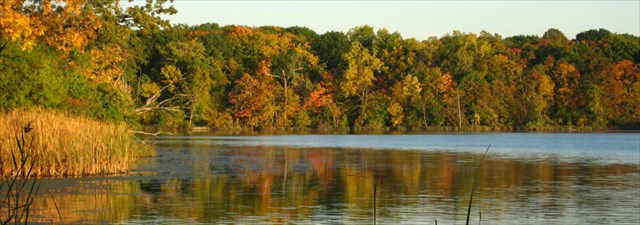
Earthcache Requirements
To claim this cache as "found", e-mail me the answers to the following questions:
1. At the posted coordinates behind the sign on the west side of the road you need to do the following. This is where you will need to get a little dirty. Here we will look at the make-up of the soil in the Mesic area. See description on how to do this below then e-mail me your results.
2. At the posted coordinates behind the sign on the west side of the road you need to do the following. Test the soil for pH by bringing a pH test kit, bottle water, and a cup with you. Mix a small portion of the soil in your cup then with your supplied water, mix it up. After it has been mixed use your pH test kit to get the pH value and e-mail me your results.
3. Based on your observations for questions 1 & 2 do you think this part of Busse Woods is classed as Dry-Mesic or Mesic upland forest? Please e-mail me your answer.
This EarthCache is located in Busse Woods Forest Preserve, also known as Ned Brown Preserve, it is a 3,700 acre preserve located in the northwestern part of Cook County. In 1980 the National Parks Service designated 489 acres of Busse Woods as a National Natural Landmark. The 489 acres is located in the northeast part of the preserve. This part of Busse Woods was given the Landmark status because it is one of the best remaining examples of Mesic and Dry-Mesic upland forest in the eastern central lowlands.
Dry-Mesic upland forest is the most common type of upland forest in Illinois. Soils are typically of a strong acid measure, sand or occasionally sandy loam with moderate water-retaining capacity. Fire plays a critical role in creating and maintaining the important plant nutrients that are needed in the soil for the native species of tree to grow here. The dominant tree species are white oak, red oak, black oak, mockernut hickory, and pignut hickory.
Mesic upland forests grow throughout the state on hilly or sloping areas that are protected from fire. Soils are typically a circumneutral measure. They occur on moderately moist soils, sandy loam to loam type soil through which water moves slowly but does not saturate the soil for significant periods of time. Soil nutrient content is high. The Dominant trees of a Mesic forests include red oak, sugar maple, and Beech.
To test the soil you will need to pick up a sample of soil and roll it in your hand. You will be looking to identify it, is it sand, sandy loam or loam. Sand will sift through your hand, sandy loam will form but will easily crumble. Loam will from with signs of cracking.
**************************************************
Congrats to IrishCubsFan on the FTF!
**************************************************